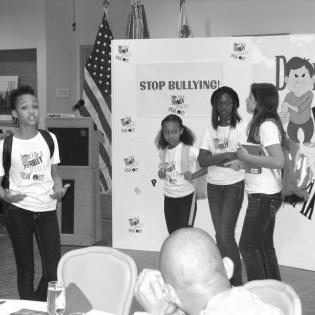Making Choices with Scarce Resources
Learners use economic thinking to determine how to allocate their scarce resources for community service.
The learner will:
- give examples of opportunity costs and tradeoffs that accompany decisions on the use of scarce resources.
- use cost/benefit analysis to select a service project.
copies of Making Choices with Scarce Resources (handout)
Instructions
Anticipatory Set:
Recall the book from Lesson One: The Quiltmaker's Gift. The king made a choice to exchange his treasures for the quilt (and smiles). He gave up one opportunity for another; the "opportunity cost" was his treasure.
Ask the learners to identify three choices they might have of what to do the first two hours after leaving school. Ask them how they would make a decision when three options are available. Whatever they give up is the opportunity cost of what they choose to do.
Discuss: Would all learners decide the same way? Explain that decisions are made based on individual choices. Not everyone values the options the same way.
Define scarcity, resource, tradeoff and opportunity cost. See handout below. Discuss examples from the group's experiences.
Brainstorm ideas of service or advocacy the group can do for the community. Since the group's resources (time, talent, and treasure) are limited, they have to make a collaborative choice and listen to the ideas of others and weigh the costs, benefits, and impact. As a result, the learners must choose some things and give up others.
Economics: Explain that choices involve trading off the expected value of one opportunity against the expected value of its best alternative. When we make a tradeoff, something may be given up and something may be gained. Satisfaction for a tradeoff can be measured against the gain of something else.
Assign the top 3-4 brainstormed service/advocacy ideas to small groups - one choice per group. In small groups, youth answer the following guiding questions in response to their assigned idea becoming the chosen project:
- What is the cost (what is given up) for you personally to engage in this project considering time, talents and treasures?
- What is the cost (what might be given up) for your family or communiry?
- What are the benefits of this choice?
Listen to and compare findings of each group. Then discuss the following questions:
- Which project would best satisfy your personal goals?
- Which project would best promote the principles of the common good?
- What is the value of one choice over the next best alternative?
- Who benefits from each choice?
Vote as a whole group from among the project ideas compared. Tally results and answer questions to clarify their vote from their analysis if desired. Come to a consensus on a project to carry out.
- Working in a whole group, list the goals for the completed project, both for themselves, the recipients, and the common good of the community.
- List the major steps for completing the service project.
- Let the learners split into teams to take responsibility for all the task areas.
- Each team should plan their portion of the project and report to the other groups.
- Discuss the completed plan and explain the importance of sensitivity and empathy.
Complete the community service activity. Reflect on the goals and impact. Reflect on what they gave up and what they gained.
The small group reports and small group summary discussions will serve as an assessment of learning.
Learners will make a decision on what service projects to complete using the survey that was completed in Lesson Two: Citizen Participation. They will consider the costs and benefits to themselves and the community through the selection of the proper project.
Handouts
Philanthropy Framework
-
Strand PHIL.IV Volunteering and Service
-
Standard VS 02. Service and Learning
-
Benchmark HS.1 Select a service project based on interests, abilities, and research.
-
-
Standard VS 03. Providing Service
-
Benchmark HS.1 Provide a needed service.
-
Benchmark HS.2 Describe the goals of the project and their impact.
-
Benchmark HS.3 Describe the task and the student role.
-
Benchmark HS.6 Describe the procedures and the importance of sensitivity to the people with whom students are working.
-
-
Standard VS 05. Integrating the Service Experience into Learning
-
Benchmark HS.3 Identify outcomes from the service.
-
-
